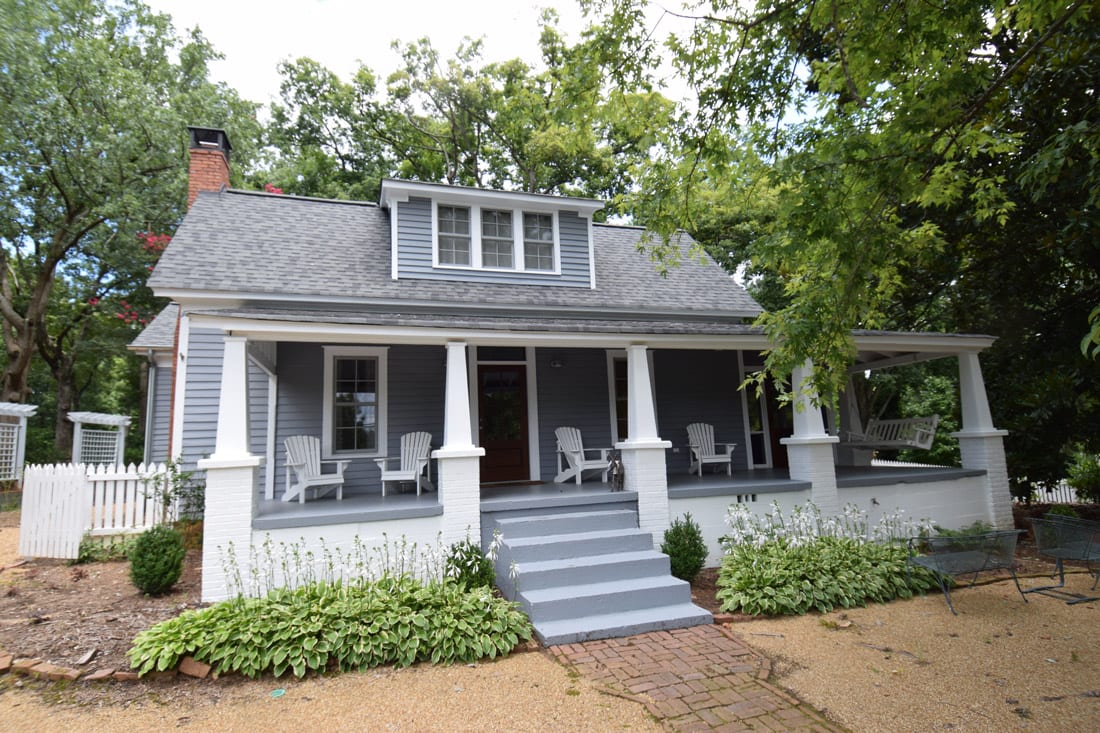BUILDING EXPERTS OFFER INSIGHTS INTO BRINGING HISTORIC HOMES BACK TO LIFE

STORY: H.M. Cauley
Towering white columns, intricate millwork, dramatic ceilings edged in decorative molding, double porches trimmed in gingerbread: A historic house restored to its original beauty is often an architectural gem because, well, they just don’t build ’em like they used to.
While Atlanta’s collection of historic homes isn’t vast (that 1864 skirmish wiped out a lot of the housing stock), those that remain have loyal followers who want to make sure what still exists isn’t lost. One such devotee is Brad Cruickshank, owner of Cruickshank Remodeling, who has been rebuilding homes in Buckhead, Sandy Springs and Midtown since 1980.
His own residence is a 1921 Ansley Park house where he discovered, under the old dining room wallpaper, a scrawled note from the original paperhanger: “It’s August 1921, and it’s as hot as 40 hells.”
“I like learning some of that personal history,” says Cruickshank. “I worked on a Brookwood Hills house with a daylight basement where the bookcase was on hinges and swung open to reveal a Prohibition-era bar with a zinc sink. It’s fun to uncover things like that.”
But historic houses can present unusual challenges to preservation minded buyers or owners who want to restore and maintain them. The first issue is usually the foundation. “Houses that are 60 to 100 years old or better may not have footings at the base of the foundation,” says Robert Windom, president of Windom Construction, which does a lot of historic renovations around town. “It’s not uncommon to see significant movement of the house over time, so the first thing I do is look at leveling the floors. If you start making changes without doing that first, you’re inviting disaster.”
Repairing or replacing plaster can also be a complicated process, adds Cruickshank. “Framing lumber wasn’t as uniform in size as it is today, so the walls are often wavy. We often have to build out the studs to hold drywall. [And] most old wiring wasn’t grounded and needs to be replaced. Typically, the HVAC and electric systems have to be replaced, too.”
Houses built before 1979 may also present lead paint and asbestos problems. Windows and doors weren’t standard sizes back then either and can be difficult to replace. “Hardware was very different, too,” says Cruickshank. “Most of our hardware now has round holes; old houses had locks with rectangular holes.”
Remodelers have ways to turn those concerns into manageable details, but one thing they can’t change are the guidelines that come with living in a house or neighborhood listed on the National Register of Historic Places or the city’s landmark list.
“Compared to most older cities, Atlanta’s historic district designation is fairly lenient,” says Windom. “But the district designation principally determines what’s viewed from the street. Most districts also have their own guidelines for making changes that were created by the residents and the city administrators, and some neighborhoods were more enthusiastic about placing limits on what owners can do with their properties.”
Owners of National Register homes must adhere to government guidelines, especially if they’re applying for tax credits. “The government wants to see that the owner is really interested in preserving history,” says Windom.
Cruickshank’s work includes educating owners and buyers about the challenges and joys of living in a historic home. “Some people understand that they’re living in an old house and they want to keep as many of the original aspects as possible,” he says. “Then there are people who never really thought about their doorknobs. But those are the elements that make a house unique.”
Atlanta-based writer and editor contributing to a number of local and state-wide publications. Instructor in Georgia State’s Communication department and Emory’s Continuing Education division.

















